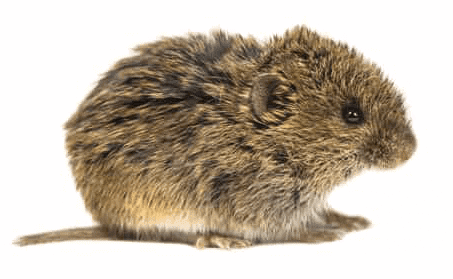Proven Approaches for Eliminating Voles Using Pest Control Methods
In this discussion, we will explore numerous tested methods for effectively removing voles with strategic parasite control methods. By understanding vole actions and executing targeted capturing, repellent, exclusion, and all-natural predator strategies, a thorough technique can be developed to deal with these elusive bugs.
Understanding Vole Actions
Understanding Vole Habits is important for properly carrying out pest control procedures. Voles are small rodents that can create considerable damages to gardens, crops, and landscape design due to their burrowing and feeding routines. By studying vole habits, parasite control experts can establish targeted strategies to handle vole populaces and reduce their influence on agricultural and domestic areas.
Voles are energetic mainly during the morning and late night, choosing to avoid brilliant sunshine. They have a voracious appetite for origins, tubers, and bulbs, making them a threat to plant health and wellness. By comprehending their feeding patterns and choices, parasite control actions can be tailored to protect susceptible greenery.
Voles are prolific breeders, with ladies bring to life numerous clutters annually. This fast reproduction rate can lead to populace surges if left uncontrolled. By studying vole reproduction behaviors, bug control experts can execute proactive actions to stop invasions before they come to be uncontrollable.
Carrying Out Vole Trapping Approaches
To properly control vole populations and reduce their influence, executing vole trapping techniques is a functional technique that straightens with the expertise of vole actions. Regularly examining and resetting catches is critical for keeping their performance in regulating vole populaces. By using vole capturing approaches tactically, it is feasible to take care of vole problems and protect against their damaging effect.

Using Vole Repellents
One effective technique for hindering voles from harmful plant life and home is by making use of vole repellents. Vole repellents are compounds created to fend off these rats, stopping them from causing damage to yards, grass, and various other areas. There are different kinds of vole repellents readily available on the marketplace, including chemical and all-natural options.
All-natural vole repellents frequently utilize solid scents or flavors that voles discover unpleasant, such as castor garlic, killer, or oil pee. These natural repellents can be put on the impacted locations to develop an environment that voles prefer to avoid. On the other hand, chemical vole repellents may consist of active ingredients that give off smells or preferences that stink to voles, hindering them from the dealt with locations.
When making use of vole repellents, it is vital to follow the producer's guidelines meticulously to make sure performance and security. Normal reapplication may be required, especially after rain or irrigation. By incorporating vole repellents into an incorporated parasite monitoring strategy, residential or commercial property owners can assist safeguard their check that greenery and personal belongings from vole damages.
Applying Exclusion Strategies
Having actually explored the performance of vole repellents in discouraging these rats, the next step entails executing exemption techniques to additional safeguard against vole damages. Exemption methods concentrate on avoiding voles from accessing locations they might target for feeding or you could try this out nesting. Additionally, building fencings with small mesh openings can assist maintain voles out of specific areas.
Regularly inspecting structures for gaps or holes and without delay sealing them with proper materials can additionally avoid voles from going into buildings. Combined with various other parasite control techniques, carrying out exemption methods can considerably decrease vole populations and reduce their impact on residential or commercial properties.
Integrating Natural Predators
When thinking about effective vole control strategies, incorporating natural predators right into the ecological community can be a useful approach. Natural killers such as owls, foxes, hawks, and snakes play a vital function in regulating vole populaces by taking advantage of them. By encouraging the visibility of these predators in the location where voles are triggering damage, a natural equilibrium can be developed, assisting to keep the vole populace in check.
To attract all-natural predators to your building, produce environments that support their demands. Building owl boxes or perches can supply sanctuary for owls and encourage them to constant the area. In addition, maintaining a varied landscape with plenty of plants and all-natural food sources can draw in a selection of predators that exploit voles.

Final Thought
In conclusion, by understanding vole habits, executing trapping approaches, using repellents, applying exemption methods, and integrating all-natural predators, it is feasible to efficiently eliminate voles making use of insect control techniques. These tried and tested techniques offer a thorough method to managing vole populaces and protecting against damages to lawns, plants, and gardens. By integrating these strategies, people can efficiently click for source fight vole problems and safeguard their properties from these pesky rats.
By studying vole habits, parasite control experts can create targeted strategies to take care of vole populaces and minimize their impact on agricultural and domestic locations.
To effectively control vole populaces and mitigate their effect, applying vole trapping techniques is a functional approach that aligns with the understanding of vole actions (vole control utah county). By employing vole trapping techniques purposefully, it is possible to manage vole invasions and secure versus their destructive impact
One efficient technique for hindering voles from destructive vegetation and residential property is by making use of vole repellents.In verdict, by understanding vole behavior, implementing trapping techniques, utilizing repellents, applying exclusion strategies, and integrating natural predators, it is possible to effectively eliminate voles using insect control methods.